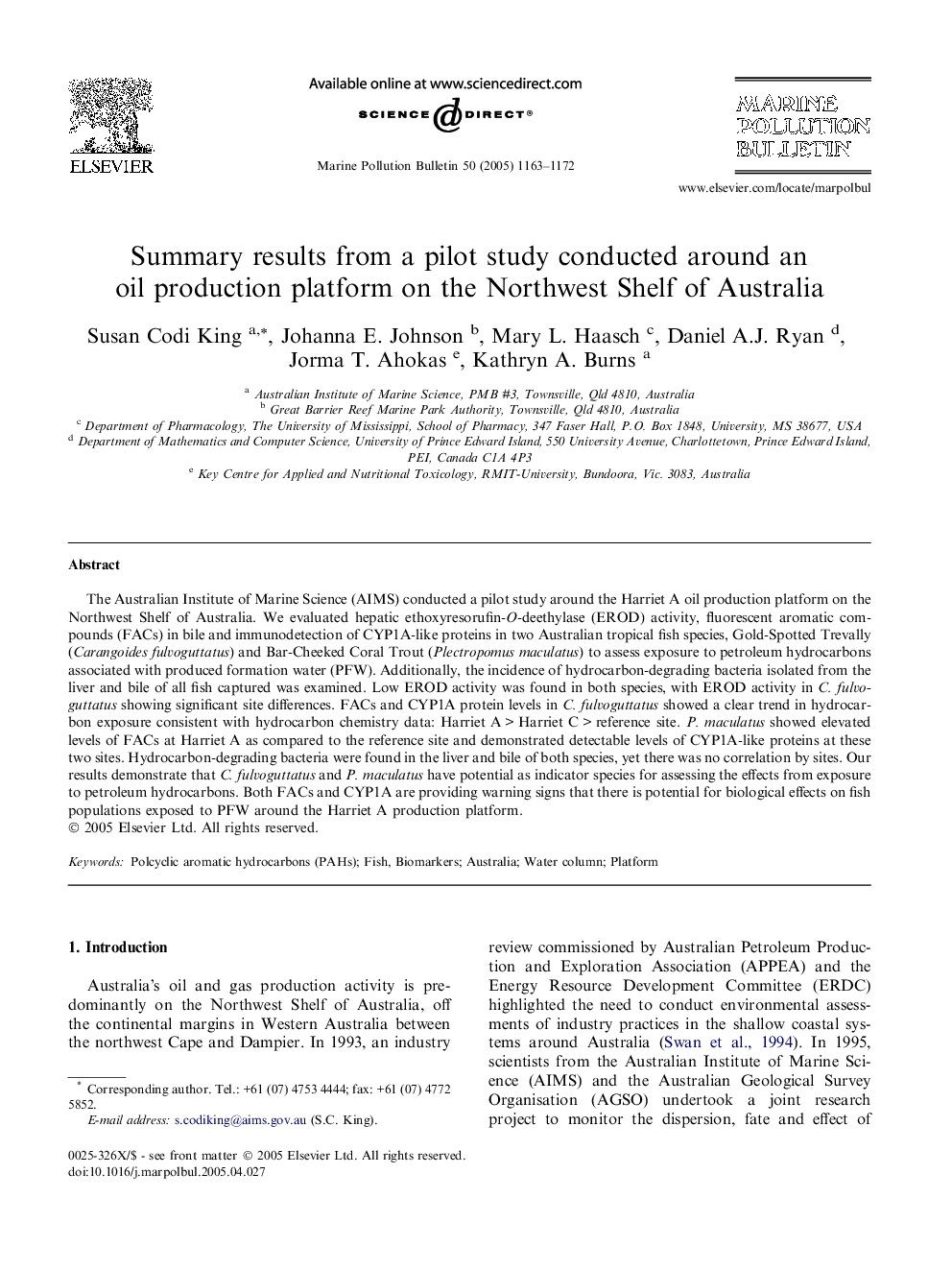| Article ID | Journal | Published Year | Pages | File Type |
|---|---|---|---|---|
| 9465987 | Marine Pollution Bulletin | 2005 | 10 Pages |
Abstract
The Australian Institute of Marine Science (AIMS) conducted a pilot study around the Harriet A oil production platform on the Northwest Shelf of Australia. We evaluated hepatic ethoxyresorufin-O-deethylase (EROD) activity, fluorescent aromatic compounds (FACs) in bile and immunodetection of CYP1A-like proteins in two Australian tropical fish species, Gold-Spotted Trevally (Carangoides fulvoguttatus) and Bar-Cheeked Coral Trout (Plectropomus maculatus) to assess exposure to petroleum hydrocarbons associated with produced formation water (PFW). Additionally, the incidence of hydrocarbon-degrading bacteria isolated from the liver and bile of all fish captured was examined. Low EROD activity was found in both species, with EROD activity in C. fulvoguttatus showing significant site differences. FACs and CYP1A protein levels in C. fulvoguttatus showed a clear trend in hydrocarbon exposure consistent with hydrocarbon chemistry data: Harriet AÂ >Â Harriet CÂ >Â reference site. P. maculatus showed elevated levels of FACs at Harriet A as compared to the reference site and demonstrated detectable levels of CYP1A-like proteins at these two sites. Hydrocarbon-degrading bacteria were found in the liver and bile of both species, yet there was no correlation by sites. Our results demonstrate that C. fulvoguttatus and P. maculatus have potential as indicator species for assessing the effects from exposure to petroleum hydrocarbons. Both FACs and CYP1A are providing warning signs that there is potential for biological effects on fish populations exposed to PFW around the Harriet A production platform.
Related Topics
Physical Sciences and Engineering
Earth and Planetary Sciences
Oceanography
Authors
Susan Codi King, Johanna E. Johnson, Mary L. Haasch, Daniel A.J. Ryan, Jorma T. Ahokas, Kathryn A. Burns,
